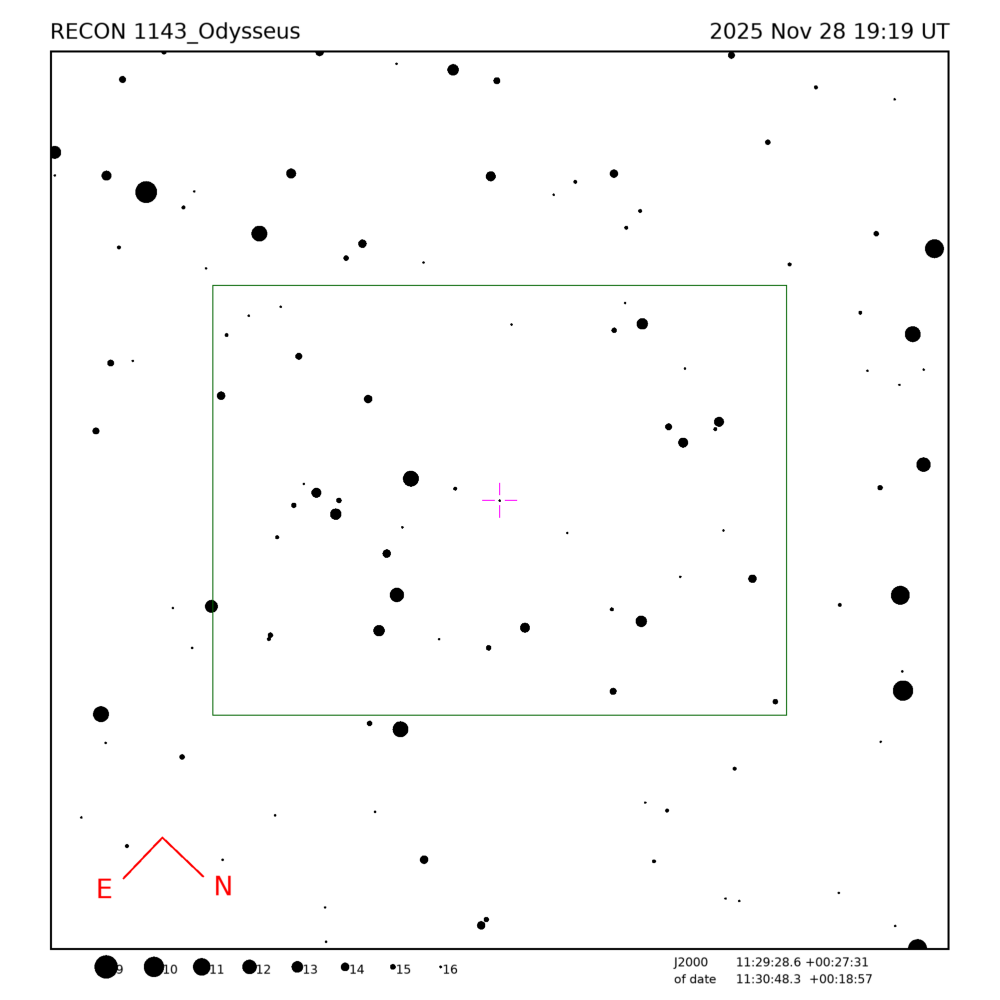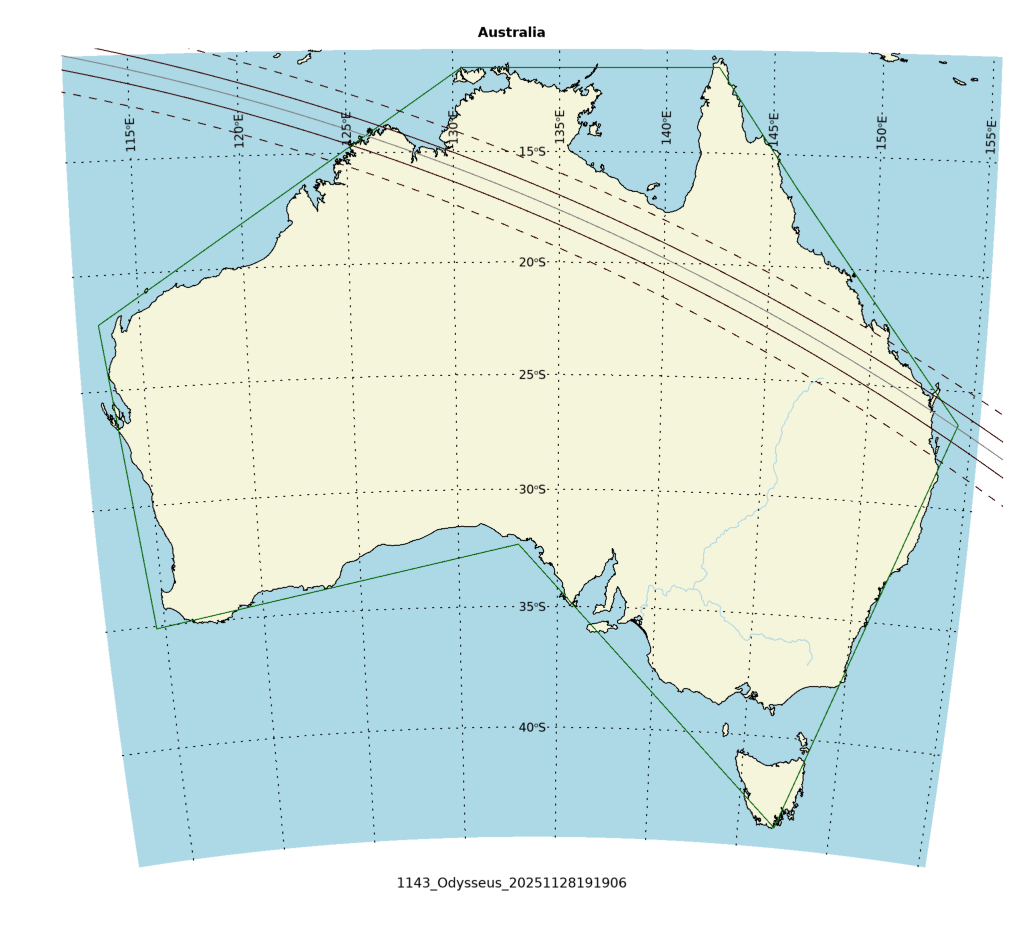
Occultation event with (1143) Odysseus, event index number 1606
Regions able to see the event: Australia
Geocentric closest approach at 2025/11/28 19:19:06 UTC
J2000 position of star is 11:29:28.6 +00:27:31
Equinox of date position of star is 11:30:48.3 +00:18:57
Star is 170 degrees from the moon. Moon is 56% illuminated.
Stellar brightness G=16.4, apparent brightess of occulting body is G=13.9
Use an exposure time of 1.50 seconds with the standard RECON-QHY system.
SNR of 3.0 per integration for unocculted signal
Expected flux drop is 9% with SNR of 0.3 for the occulted depth (per occulted point)
Apparent velocity is 21.4 km/sec on the sky relative to the star, or, 20.6 arcsec/hr.
Position angle of asteroid motion is 115.5 degrees
The recommended exposure time corresponds to 32.1 km per image.
The 1-sigma error in the time of the event is 1.4 seconds.
The 1-sigma cross-track error in the shadow position is 29.3 km.
The sky-plane scale is 3743.2 km/arcsec.
Diameter estimates:
126.5 km assuming a 5% albedo, maximum of 5.9 sec for a central chord
51.6 km assuming a 30% albedo, maximum of 2.4 sec for a central chord
Cross-track diameter of 114.6 km used for deployment plan.
Star training set for 1143_Odysseus, (2025/11/28 19:19UT) Object RA Dec mag sep mel Regulus 10:09:45.0 +11:50:22 1.3 23.18 167 Denebola 11:50:22.8 +14:25:38 2.1 14.92 165 79 Leo 11:25:22.1 +01:15:55 6.4 1.66 172 PPM 157877 11:28:53.8 +00:48:44 7.7 0.69 171 PPM 157909 11:30:50.7 +00:05:03 9.5 0.23 170 1143_Odysseus 11:30:48.3 +00:18:57 13.9 170 Positions are for equinox of date


Star training set for 1143_Odysseus, (2025/11/28 19:19UT) Object RA Dec mag sep mel Regulus 10:08:21.9 +11:58:02 1.3 23.18 167 Denebola 11:49:02.7 +14:34:16 2.1 14.92 165 79 Leo 11:24:02.3 +01:24:28 6.4 1.66 172 PPM 157877 11:27:34.0 +00:57:19 7.7 0.69 171 PPM 157909 11:29:31.0 +00:13:38 9.5 0.23 170 1143_Odysseus 11:29:28.6 +00:27:31 13.9 170 Positions are for J2000